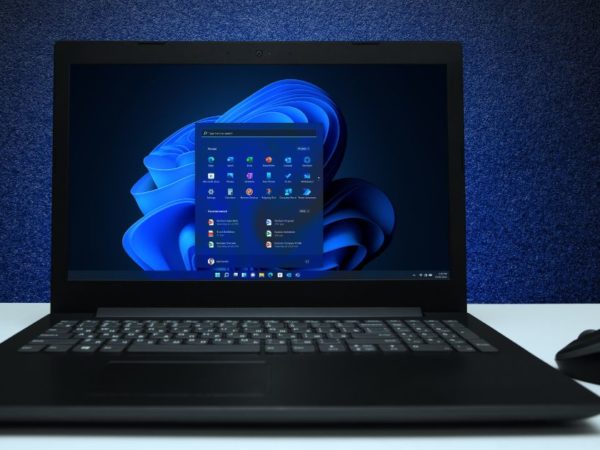One of the applications that every computer and every smartphone usually comes with out of the box is the familiar browser app that allows you to access your favorite web sites. There is nothing much you can enjoy out of the internet if you do not have a browser to do your online research, to check out your favorite articles, to troubleshoot your code for developers and to watch your favorite videos on your personal computer. If a browser was a kitchen tool, then it is simply one of those that a chef would keep close so that it can be frequently and easily reached out to.
This article will describe the best web browsers that you can easily find out there. It will expose their features so that you can find it easy to pick one that you will be convinced will serve you well. Let us begin.
1. Firefox
Released under the codename “Phoenix” seventeen years ago on 23 September 2002, Mozilla Firefox has continued to grow in leaps and bounds. It is a free and open-source web browser developed by the Mozilla Foundation and its subsidiary, Mozilla Corporation. This browser uses the Gecko layout engine to render web pages, which implements current and anticipated web standards. Looking at its availability, you can use it in Windows 7,8 or newer, macOS, and Linux. You can also find Firefox in Unix and Unix-like operating systems such as Solaris, FreeBSD, illumos, NetBSD and others though they are unofficial. Moreover, Firefox is also available for mobile or Android devices and iOS. For the iOS version though, it uses the WebKit layout engine instead of Gecko due to limitations posed by the platform.
Features of Firefox
The following are the outstanding features that you will enjoy if you choose Firefox as your default Desktop or Mobile browser
- Tabbed browsing
- Spell checking
- Incremental search
- Live bookmarking
- Smart Bookmarks
- A download manager
- Private browsing
- Approximately 10 percent of global usage.
- Geolocation browsing that is location-aware – This is based on Google service
- Integrated search system – which uses Google by default
- Developer tools – such as the Error Console or the DOM Inspector, or extensions, such as Firebug and Pocket.
- Ability to add extra packages or add-ons
- Theming – You can use third-party themes to make look the way you want
- Extensibility – You can add other applications such as games, ad-blockers, screenshot apps, and many other apps.
- Web standards – Firefox implements the following web standards [ HTML4 (almost full HTML5), XML, XHTML, MathML, SVG 2 (partial), CSS (with extensions),[69] ECMAScript (JavaScript), DOM, XSLT, XPath, and APNG (Animated PNG) images with alpha transparency, TLS and HPPTS security ptotocols] –Wikipedia
2. Google Chrome
As of July 2019, it was estimated that Google Chrome had a 71% browser market share on personal computers and 63% across all platforms. Being one of the most successful web browsers, Google Chrome has its story too. Google Chrome is a cross-platform web browser developed by Google. It was first released in 2008 for Microsoft Windows and was later ported to Linux, macOS, iOS, and Android. The browser is also the main component of Chrome OS, where it serves as the platform for web apps. The browser was first publicly released on September 2, 2008, for Windows XP and later, with 43 supported languages, officially a beta version, and as a stable public release on December 11, 2008. (Wikipedia).
Features of Chrome
- A minimalistic user interface
- Chrome is attributed to have a strong browser performance
- Theming- Chrome can be themed according to the specifications of the user.
- Bookmarks and settings synchronization – Synchronize your bookmarks, history, and settings across all devices via your Google Account.
- Web standards support – Chrome has very good support for JavaScript/ECMAScript, HTML5, CSS, HTTP(S)
- Wonderful password management
- Plugins – Chrome supports up to 45 plugins
- Privacy – Incognito mode disables chrome’s ability to store any history information such as cookies, form inputs, and site data.
- Auto-update capability
- Integrated Adobe Flash Player
- API keys for some Google services
- The Widevine digital rights management module
- Licensed codecs for the popular H.264 video and AAC audio formats
- Tracking mechanisms for usage and crash reports
- Crash and Error Reporting.
3. Chromium
I am sure you have heard of Chromium especially if you are an extensive Linux user. Well, Chromium is not only a browser but an open-source project that produces the source code that Chrome uses. When Chrome was launched in 2008, Google kicked off the Chromium project. Since Chromium is open-source, it is subject to the philosophy of openness and thus there are other contributors such as Microsoft whose current Edge is based on Chromium. Chrome is built on Chromium but adds other components/details that finally lacks in Chromium
Features of Chromium
Chromium has similar features as Chrome but lacks the following features:
- Auto-update capability
- Integrated Adobe Flash Player
- API keys for some Google services
- The Widevine digital rights management module
- Licensed codecs for the popular H.264 video and AAC audio formats
- Tracking mechanisms for usage and crash reports
- Crash and Error Reporting.
For Linux lovers, you are lucky, check Installing Chromium Web Browser on Linux and begin browsing.
4. Vivaldi
Vivaldi builders believe that a browser should adapt to you, not the other way around. Officially launched on April 6, 2016, Vivaldi is a freeware web browser developed by Vivaldi Technologies and runs on all platforms. When the Presto-based Opera transitioned and re-developed it to be based on Chromium, the users of Opera claim that it lost many of its iconic features. Vivaldi was born with the aim of reviving the features of the Presto-based Opera with its own proprietary modifications.
Features of Vivaldi
According to Vivaldi, the following the top features of this browser.
- Tab Management – Unique features give you full control of how you group and display browser tabs.
- Customization – You can tweak and tune every part of the browser to create your own unique experience.
- User Interface – An adaptive interface lets you adjust the position, size, and appearance of the browser’s UI elements.
- Navigation – Get to where you’re going faster with fully configurable Search options, custom shortcuts and a Bookmark manager fit for power users.
- Mouse & Keyboard – You have the choice to use custom Keyboard Shortcuts, Mouse Gestures or the command line control of Quick Commands.
- Privacy & Security – Vivaldi is built with privacy as a priority and gives you full control of settings critical to keeping your data safe.
- Tools – An arsenal of built-in tools like Notes, Image Properties and more give you advanced functionality without sacrificing performance.
5. Opera
Opera, developed by Opera Software is a freeware web browser built to run on Windows, Android, iOS, macOS, and Linux operating systems. The new transitioned from being Presto-based to become based on Chromium and uses the Blink layout engine. It differentiates itself because of a distinct user interface and other features as described below.
Features of Opera
Opera promises the following features to its users
- Built-in VPN – Opera claims that this feature will reduce online tracking and shield your browsing from everybody besides you.
- Built-in adblocker to help users get rid of the endless barrage of ads online. It also blocks cryptocurrency mining and helps pages load faster.
- Built-in messengers to enable its users to chat with friends and browse at the same time, with no need to switch between tabs or programs.
- Aesthetics – Dark and light mode to help users customize Opera with dark and light themes, keyboard shortcuts, wallpapers, extensions, their favorite bookmarks and tons of other options.
- Currency, unit, and time zone converters
- Unit converter – Built-in currency, measurement, and time zone converters in the Opera browser convert unfamiliar numbers and times with a simple highlight.
- Flow: Flow implements personal space for links, videos, images, and notes, that you want to access from your computer and phone.
On CentOS 8 you can install it using How To Install Opera Browser on RHEL 8 / CentOS 8 guide.
6. Brave
Brave is a free and open-source web browser developed by Brave Software, Inc. As with many other browsers out there, Brave is based on the Chromium web browser. What distinguishes Brave from others is its ability to block ads and website trackers out of the box. Moreover, Brave provides a means for users to send cryptocurrency contributions in the form of Basic Attention Tokens to websites and content creators.
Top features of Brave
- Fast Browsing – According to its creators, Brave loads pages three times as fast out of the box with nothing to install, learn or manage.
- Easy to switch to Brave – It’s easy to import your settings from your old browser. You can do it during the welcome tour or later through the menus.
- Support your favorite sites with Brave Rewards – with Brave Rewards activated, you can support the content creators you love at the amount that works for you.
- Privacy and Security – Brave fights malware and prevents tracking, keeping your information safe and secure. Clearing of browsing data and a built-in password manager.
- Form autofill
- Search – Choose default search engine
- Extensions/Plugins – Brave Desktop now supports most of the Chrome extensions in the chrome web store
7. Midori
From Midori’s Website, Midori is a web browser born on December 16, 2007, under the leadership of Christian Dywan and Nancy Runge with the purpose of being an alternative, light, fast, free and open-source browser. It uses the WebKit rendering engine and GTK all rewritten in Vala. Since Midori’s primary concern is privacy, it uses DuckDuckGo by default to ensure better privacy towards users.
Features of Midori
- Support for integration with GTK 2 and GTK 3
- It uses WebKit rendering engine instead of Chromium
- It supports the use of tabs, windows and session management
- Configurable web search engine
- User scripts and user styles support
- Good bookmark management
- Customizable and extensible interface
- Extension modules can be written in C and Vala
- Support for HTML5 and newer technologies
- As mentioned, DuckDuckGo is the default search engine
- Internationalized domain names support
- Smart bookmarks
- Ensures private browsing
- You can add extensions such as Add locks
8. Tor Browser
The inspiration behind Tor is to provide a route and a medium where you can communicate to other people on the web and maintain your anonymity. Tor, therefore, is a free and open-source software for enabling anonymous communication. The name is derived from an acronym for the original software project name “The Onion Router”. To bring the idea home, the goal of onion routing was to have a way to use the internet with as much privacy as one can afford, and the point was to route traffic through multiple servers and encrypt it each step of the way. The Tor Project is deeply committed to transparency and the safety of its users.
Features of Tor.
i. It blocks trackers
Tor Browser isolates each website you visit so third-party trackers and ads can’t follow you. Any cookies automatically clear when you’re done browsing. So will your browsing history.
ii. It defends Against Surveillance
Tor Browser prevents someone from watching your connection from knowing what websites you visit. All anyone monitoring your browsing habits can see is that you’re using Tor.
iii. Resists Fingerprinting
Tor Browser aims to make all users look the same, making it difficult for you to be fingerprinted based on your browser and device information.
iv. Tor implements multi-layered encryption
Your traffic is relayed and encrypted three times as it passes over the Tor network. The network is comprised of thousands of volunteer-run servers known as Tor relays.
Interested in a quick installation guide, check:
Installing Tor Browser on Linux Mint 19 / Ubuntu 18.04.
9. Waterfox
Waterfox which has a suffix similar to that of Fire-fox is an open-source web browser for x64, ARM64, and PPC64LE systems. The developers had the intention to create a speedy and ethical browser, and maintain support for legacy extensions dropped by Firefox, from which it is forked. I think that is why it is called Water-fox.
Features of Waterfox
i. No Telemetry
Waterfox promises that this browser does not collect any telemetry, meaning you do not have to worry about any tracking or usage information about what you do inside your browser.
ii. Limited Data Collection
The only thing that Waterfox sends back is your OS and browser version to check for updates to various components. This makes it a respecter of privacy.
iii. Cross-platform
There are official releases for Windows, macOS, Linux, and Android.
iv. NPAPI Plugins
They should be used responsibly, but Waterfox supports the use of Java and Silverlight plugins, as well as any other 64-Bit NPAPI plugins.
v. Bootstrapped add-ons
Waterfox is one of the few fully customizable browsers, allowing you to modify and extend it any way you please
vi. Polish your userChrome
Waterfox allows you to modify the internal CSS and JS to your heart’s content, no need to worry about it being dropped in functionality.
vii. Stable API
No need to worry about your extensions becoming obsolete every release, with a stable API until the next major release milestone.
10. Yandex browser
The Yandex browser is something cool from Russia. It is a freeware web browser developed by the Russian web search corporation Yandex that uses the Blink web browser engine which is based on Chromium. This browser has a combination of tools that not only makes your browsing seamless but also make sure that what you download is safe. Yandex checks webpage security with the Yandex security system and checks downloaded files with Kaspersky anti-virus so that you are pretty safe. To speed up your browsing, Yandex incorporated Opera’s Turbo technology to make your clicks respond faster than normal especially if you are on a slow connection.
Outstanding features of Yandex
It is cross-platform – This means it runs on Linux, Windows, and macOS.
Uses Yandex search as the default search engine
Different “new tab” screen with a Windows 8-style interface and specialized widgets for popular services (e.g., the Gmail widget shows the number of unread messages).
Integrated keyboard layout switcher in Omnibox – For example, if a user often uses gmail.com and starts typing “пьф” (“gma” with Russian keyboard layout) and presses Enter, the user will then be taken to gmail.com and not to the search page for “пьф“.Wikipedia.
Accept browser extensions from the Opera add-ons website
In order for one to make maximum use of the multitude of internet resources waiting to show up in a click, having a browser that is more of a companion than a tool can really make it all worth it. We have covered ten browsers that you can choose from and proceed into this sea of infinite knowledge called the internet. Equip your toolbox as you get ready to immerse yourself into this surfing world while maintaining your privacy and security because we cannot forget to remember that ravenous wolves are snarling and growling.
To make your reading even sweeter, consider the guides below for your delight
How To Share your Linux Terminal Session in Web Browser



